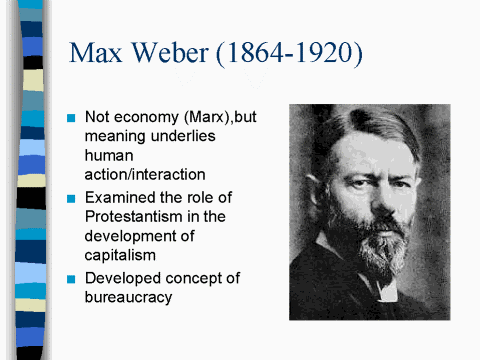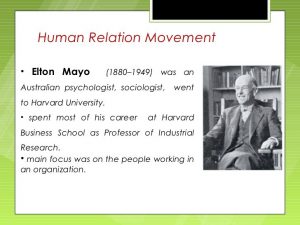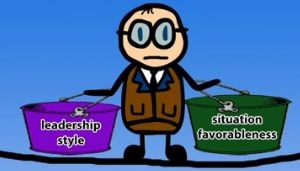Historical and contemporary theories of management
The idea of management is not new; managing is an inbuilt character of human beings. Early forms of management concepts have been applied throughout history in order to progress as a society. We see beautiful creation from Stone Age to civilization – could those creations such as monuments and cities be in place without management? Management activities were always needed in order to complete massive projects.
The Industrial Revolution as well as the growth of factories and mass production created a need for strong management processes. Better and more efficient ways of manufacturing goods were needed in order to maximize productivity, bring down costs, and increase profitability. As a result, since the late 1800’s, theorists have developed a wide range of methods for improving management practices.
Scientific Theory by Frederick W. Taylor: (1890-1940): At the turn of the century, the most prominent and large organizations realized that besides routinely producing goods they require to go into depth of business processes. In the West the organizations give a lot of importance to scientific and technical matters, including careful measurement and specification of activities and results. Frederick Taylor developed the scientific management theory in 1911 which advocated efficiency by systematically improving the productivity of task completion by utilizing scientific, engineering, and mathematical analysis. The goal of scientific theory was to decrease waste, increase the process and methods of production, and create a just distribution of goods. The goal was to serve the common interests of employers, employees, and society. Taylor standardized the tasks as much as possible. Workers either got rewarded or punished as per their output. This approach appeared to work well for organizations with assembly lines and other mechanistic, routinized activities.
Frederick Winslow Taylor’s scientific management theory was devised form the point of view of industrial engineering that established the organization of work as in Ford’s assembly line. A time-study department at Ford Motor Company had efficiency experts with stop watches working for studying the work process and eliminate wasteful motion. This study made some advances. But, then Ford managers came up with a revolutionary idea that represented the archetypal expression of scientific management. Instead of taking workers to the work, teams of workers going to work spots and building a car sequentially, this new model brought the work to the workers. In addition, this new paradigm broke the work process down into its smallest constituent parts. The assembly line, was inaugurated in 1913. It was a conveyor belt that steadily moved along a piece of the automobile while stationary workers repeatedly did one task adding an element to it. Tremendous gains in efficient labor were achieved. By regularizing and rationalizing the work process, and its minute division of labor, the production of an automobile, which before used to take some 12 hours per vehicle, now took only a bit over 90 minutes to completion. This discipline, along with the industrial psychology established by others at the Hawthorne Works of Western Electic in the 1920s, moved management theory from early time-and-motion studies to the latest total quality control ideas.
Taylor’s ideas, clearly articulated in his writings, were widely misinterpreted. Employers used time and motion studies simply to extract more work from employees at less pay. Unions condemned speedups and the lack of voice in their work that “Taylorism” gave them. Quality and productivity declined when his principles were simplistically instituted.
Administrative Theory by Henri Fayol (1841-1925) Henry Fayol was a French mining engineer who was also the director of mines. He developed a general theory of business administration that is often called Fayolism. He and his colleagues developed this theory. Fayol is widely acknowledged as a founder of modern management methods. He coined fourteen principals of  management as follows:
management as follows:
- Division of work – The division of work is the course of tasks assigned to, and completed by, a group of workers in order to increase efficiency. Division of work, which is also known as division of labour, is the breaking down of a job so as to have a number of different tasks that make up the whole. This means that for every one job, there can be any number of processes that must occur for the job to be complete.
- Authority and Responsibility – Authority is the right to give orders and obtain obedience, and responsibility is the consequence of authority. One cannot enjoy authority without being responsible for actions.
- Discipline – Employees must obey and respect the rules that govern the organization. Good discipline is the result of effective leadership.
- Unity of command – Every employee should receive orders from only one superior or behalf of the superior.
- Unity of direction – Each group of organizational activities that have the same objective should be directed by one manager using one plan for achievement of one common goal.
- Subordination – The interests of any one employee or group of employees should not take precedence over the interests of the organization as a whole.
- Remuneration – All Workers must be paid a fair wage for their services.
- Centralization – Centralization refers to the degree to which subordinates are involved in decision making.
- Scalar chain – The line of authority from top management to the lowest ranks represents the scalar chain. Communications should follow this chain.
- Order – This principle is concerned with systematic arrangement of men, machine, material etc. there should be a specific place for every employee in an organization.
- Equity – Managers should be kind and fair to their subordinates.
- Stability of tenure of personnel – High employee turnover is inefficient. Management should provide orderly personnel planning and ensure that replacements are available to fill vacancies in the organization.
- Initiative – Employees who are allowed to originate and carry out plans will exert high levels of effort.
- Esprit de corps – Promoting team spirit will build harmony and unity within the organization.
Bureaucratic Theory by Max Weber (1930-1950): Max Weber elaborated the scientific management theory further by adding flavor of his bureaucratic theory. Weber focused on dividing organizations into hierarchies, establishing strong lines of authority and control. His notion was that organizations must develop comprehensive and detailed standard operating procedures for all routinized tasks. In the late 1800s, Max Weber criticized organizations for running their businesses with their family members. Weber be lieved this informal organization of supervisors and employees inhibited the potential success of a company because power was misplaced in hands of those few who dint have the requisite experience. He felt that employees were loyal to their bosses and not to the organization. Weber believed in a more formalized, rigid structure of organization known as a bureaucracy. This non-personal view of organizations followed a formal structure where rules, formal legitimate authority and competence were characteristics of appropriate management practices. He believed that a supervisor’s power should be based on an individual’s position within the organization, his or her level of professional competence and the supervisor’s adherence to explicit rules and regulations. Bureaucracy can best be defined as formal hierarchy and chain of command which distinguishes the level of authority within an organization.
lieved this informal organization of supervisors and employees inhibited the potential success of a company because power was misplaced in hands of those few who dint have the requisite experience. He felt that employees were loyal to their bosses and not to the organization. Weber believed in a more formalized, rigid structure of organization known as a bureaucracy. This non-personal view of organizations followed a formal structure where rules, formal legitimate authority and competence were characteristics of appropriate management practices. He believed that a supervisor’s power should be based on an individual’s position within the organization, his or her level of professional competence and the supervisor’s adherence to explicit rules and regulations. Bureaucracy can best be defined as formal hierarchy and chain of command which distinguishes the level of authority within an organization.
Human Relations Theory by Elton Mayo: The Western Electric’s Hawthorne plant was located in Chicago. It had some 29,000 employees and it manufactured telephones and telephone equipment mainly for AT & T. The company was known for its advanced personnel policies. The company kept updating its policies at regular intervals and once welcomed a research study by the National Research Co uncil to check the relationship between friendly work-place atmosphere and individual efficiency. The study began by Pennock and Clair Turner, in 1929 Turner invited Elton Mayo for his inputs on the study. Mayo indicated that the Test Room Workers had turned into a social unit, enjoyed all the attention they were getting, and had developed a sense of participation in the project.
uncil to check the relationship between friendly work-place atmosphere and individual efficiency. The study began by Pennock and Clair Turner, in 1929 Turner invited Elton Mayo for his inputs on the study. Mayo indicated that the Test Room Workers had turned into a social unit, enjoyed all the attention they were getting, and had developed a sense of participation in the project.
In order to establish his premise Mayo instituted a series of interviews. These provided the workers with an opportunity to express their views and let off steam. It emerged that when people are distressed in a given situation and are given a chance to discuss, they feel better even if the situation does not change. The experiment also found that some complaints of workers had little or no basis, and they were stressed in their personal lives which was causing distress. By focusing on more informal and open conversation with workers and by empathetically listening to them Mayo had struck a key which linked the style of supervision and the level of morale to heightened levels of productivity.
Mayo was acclaimed by his followers as the Founder of the Human Relations (HR) as a branch of Management Studies, while he was criticized by sociologists for not going far enough in his analysis. Do you know that the Hawthorne case stimulated ‘Organizational Behavior’ as subject? And also gave birth to McGregor’s ‘Theory X and Theory Y’ and theory “Z” with its wider implications for leadership in organizations.
Systems Theory by Ludwig con Bertalanffy: Systems theory studies the structure and properties of systems in terms of relationships. It was established as a science by Ludwig von Bertalanffy, Anatol Rapoport, Kenneth E. Boulding, William Ross Ashby, Margaret Mead, Gregory Bateson and others in the 1950’s. Systems theory can be called a transdisciplinary study. It brings together theoretical principles and concepts from ontology, philosophy of science, physics, biology and engineering. Its applications are found in numerous other fields including geography, sociology, political science, organizational theory, management, psychotherapy and economics amongst others.
Karl Ludwig von Bertalanffy who was a Viennese professor of biology, worked very hard to identify structural, behavioral and developmental features common to particular classes of living organisms. One approach was to look over the empirical universe and pick out certain general phenomena which are found in many different disciplines, and to seek to build up general theoretical models relevant to these phenomena, e.g., growth, homeostasis, evolution. Another approach was to arrange the empirical fields in a hierarchy of complexity of organization of their basic ‘individuality’ or units of behavior, and to try to develop a level of abstraction appropriate to each. Examples are generalizations on the levels of cells, simple organs, open self-maintaining organisms, small groups of organisms, society and the universe. The latter approach implies a hierarchical “systems of systems” view of the world.
Bertalanffy’s ideas were developed into a General Systems Theory. He defined a general system as any theoretical system of interest to more than one discipline. This new vision of reality is based on awareness of the essential interrelatedness and inter-dependence of all phenomena – physical, biological, psychological, social and cultural. It transcends orthodox disciplinary and conceptual boundaries.
The systems view looks at the world in terms of relationships and integration. Systems are integrated whose properties cannot be reduced to those of smaller units. Instead of concentrating on basic building blocks or substances, the systems approach emphasizes the principles of organization. Every organism, from the smallest bacterium through the range of plant, animals and human beings – plus the family, society and the planet as whole – is an integrated whole and thus a living system.
In Bertalanffy’s view human survival is the paramount purpose for cultivating the uncommon sense of General Systems Theory. Our civilization is experiencing enormous difficulties due to lack of ethical, ethological and ecological criteria in the manifestation of human affairs, which are currently only concerned with the management of larger profits for a small minority of privileged humans. Bertalanffy believed that the need for a general systems consciousness was a matter of life and death, not just for ourselves but also for all future generations on our planet. He advocated a new global morality, an ethos which does not center on individual values alone, but on the adaptation of Mankind, as a global system, to its new environment. System’s theory brought in a paradigm shift in management thinking. Organizations don’t exist in vacuums, they have to be aware of their surrounding for their own existence.
X&Y Theory by Douglas McGregor: Theory X and Theory Y are theories of human motivation created and developed by social psychologist Douglas McGregor at the MIT Sloan School of Management in the 1960s that have been used in human resource management, organization behavior, organizational communication and organizational development. They describe two contrasting thinking of workforce motivation. Theory X and Theory Y represent the perceptions managers hold about their employees. It is not about their general behavior outside the work place, it pertains on their job, while working in the organization.
The ‘Theory X’ management assumes employees are inherently lazy and will avoid work if they can and that they inherently dislike work. As a result of this, management believes that workers need to be closely supervised and all-inclusive systems of controls be developed. It requires a hierarchical structure with narrow span of control at each and every level. According to this theory, employees will show little ambition without a tempting incentive program and will avoid responsibility whenever they can.
Theory Y is a participative style of management which assumes that people will exercise self-direction and self-control in achieving the organizational goals and objectives. It assumes that employees are committed to organization’s objectives. It is management’s main task in such a system to mold the employees and maximize their commitment.
This theory is useful in the Human Relations movement and training programs. It helps in understanding supervisory skills, delegating, career development, motivating, coaching, mentoring, etc.
Contingency Theory: A contingency theory is an organizational theory that claims that there is no best way to organize a corporation, to lead a company, or to make decisions. Instead, the optimal course of action is contingent (dependent) upon the internal and external situation. A contingent leader effectively applies his own style of leadership in the given situation. Basically, contingency theory asserts that when managers make a decision, they must take into account all aspects of the current situation and act on those aspects that are key to the situation at hand. Basically, it’s the approach that all factors are interdependent. For example, the continuing effort to identify the best leadership or management style might now conclude that the best style depends on the situation. Leadership style changes according to the institution; for example leadership in leading army troops is different than leadership in an educational institution, or leadership in a hospital than a leadership in a business organization. Some important factors for companies to decide contingencies are as below:
- Technology
- Suppliers and distributors
- Consumer interest groups
- Customers and competitors
- Government
- Unions
















































